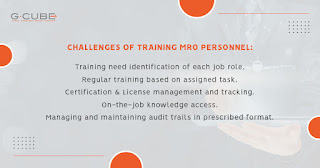Cracking the productivity issue has been a pretty long-term challenge for a lot of our clients. Large product portfolio, high attrition in the industry, complex regulatory procedures – the trials are varied and manifold. The regular complaint has been that longer time to productivity usually always means lesser time at peak productivity resulting is hindered business growth.
Thus, the basic and foremost requirement of any organization is to achieve shorter TTP and here are 5 steps to do the same. All you need is the right LMS.
Step 1: Pre-joining Engagement
The idea is to identify the skills and abilities of each individual right at the time of joining so there is no wastage of time and effort. The information can be captured on the LMS which can then deploy trainings according to the levels at which the employee currently is. A pre-joining training kit which may contain information about the organization, leadership, payroll etc also helps the employees settle down faster with the company with a sense of belonging.
Step 2: Creating Personalized Learning Path
With information gathered and basic training deployed in the previous step, an effective LMS can then assign automated training to a new hire to bring them at par with others in their batch or even move someone to advanced batches if they are ahead of the others. Keeping in mind the different skill levels, talents and learning styles, a good learning management system can create a learning path for individuals based on multiple factors and help them to find what they are good at and truly enjoy doing. This in-turn helps them achieve peak performance faster.
Step 3: Create Immersive Learning Experience
In-depth understanding of the product can be easily delivered through interactive media via an LMS. Trainees can be offered life-like simulations for scenarios, understanding of product combinations and with inputs from sales teams for real questions asked by customers. What they get is an immersive experience and are more confident to achieve peak performance faster.
Small learning nuggets can be sent to the employees at regular intervals, automated through the LMS. This ensures continued and reinforced learning which reduces knowledge loss and creates better customer experience.
Step 4: Segregate Experience Employees from new ones
Segregation of training programs and content based on who the audience is effectively reduces time lost in futile training or retraining. An LMS is again key to this step to achieve desired results. For example, the same product needs to have two deliveries. For basic level folks who need more detailed explanations and an advanced level for whom it can be a quick upskill intervention. As your LMS already has the learning data of each individual, it can help you identify the right kind of training required for a particular individual who is at a particular level of understanding or experience.
Step 5: Make Learning an Agile Process
A company that has a tradition of agility will always find it easier to handle bumps in the road. Like most things, training processes and systems also experience fatigue and become outdated very quickly. Companies need to invest in an LMS that are built to handle and respond to update needs in an intelligent way. A good LMS will allow deployment of changes, alerts to roles who need to learn or get certified, and also give leadership visibility to the status of certifications, especially those that fall under the compliance umbrella.
Knowledge is very liquid and relative, especially as the typical time in a role gets impacted by attrition, role change or promotions. Leaders need to be able to get more time per resource at peak productivity and the right LMS can be an ideal partner to help organizations achieve their Time to Productivity goals.
At GCube, we have 20 years of experience and 80+ industry awards in learning technologies. To know more about products and services, please do write to us.



